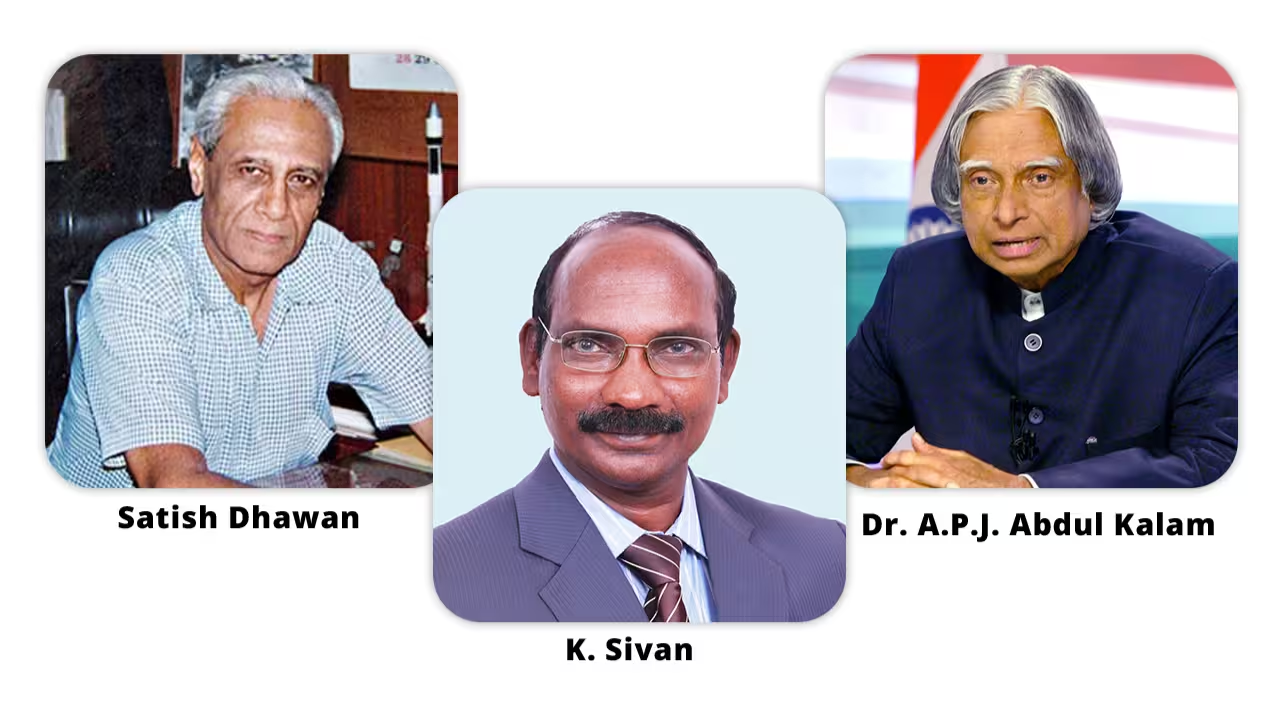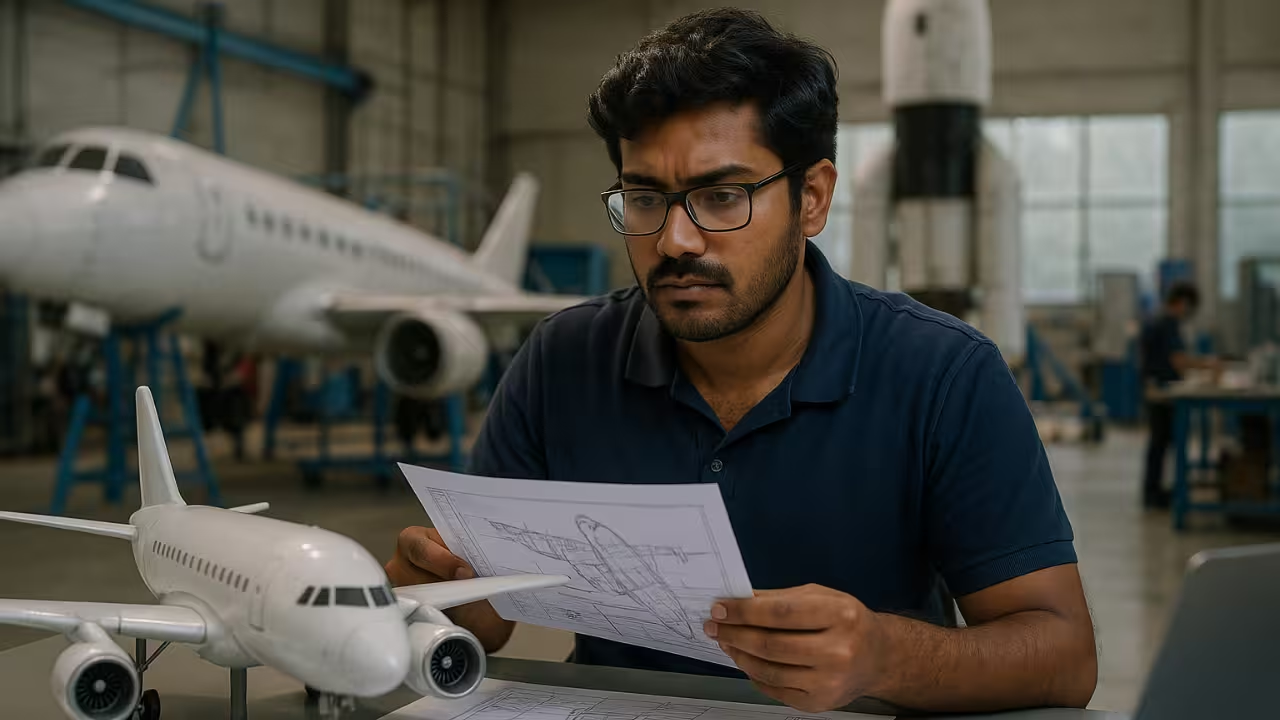

The Aerospace Engineering field is a fusion that blends principles of varied disciplines to design and operate aircraft. It is an umbrella field containing aeronautical and astronautical fields within. Aeronautical engineering majorly focuses on the workings of flights within the Earth’s atmosphere, whereas astronautical engineering focuses on technology of flight and operations outside the Earth’s atmosphere like spacecrafts.
Aerospace Engineers who inspire to push the boundaries of flight and innovation.
Dr. APJ Abdul Kalam
Dr. A.P.J. Abdul Kalam, India’s “Missile Man,” led key projects like SLV-III, PSLV, and the Integrated Guided Missile Programme, boosting India’s defense and space capabilities. He played a pivotal role in the 1998 Pokhran-II nuclear tests and championed Technology Vision 2020. His innovations, including the Kalam-Raju Stent and Tablet, reflected his commitment to societal progress.
Satish Dhawan
Satish Dhawan, the “Father of experimental fluid dynamics research in India,” advanced boundary layer theory and established the nation’s first supersonic wind tunnel at IISc. As ISRO Chairman (1972–1984), he drove indigenous space technology, leading to INSAT, IRS, and PSLV systems, cementing India’s status as a spacefaring nation.
K. Sivan
K. Sivan, the “Rocket Man of India,” advanced aerospace engineering through his work on PSLV, GSLV MkII & MkIII, and the RLV-TD, specializing in mission design, control, and guidance. He developed the “day-of launch wind biasing” strategy, created the SITARA 6D simulation software, and led ISRO’s Gaganyaan human spaceflight program.

It equips students with the skills of thinking, designing, creating, operating and maintaining the spacecraft. It is a highly specialized field that merges science, innovation and technology to explore and conquer both the skies and outer space. Aerospace engineers work on projects including Aerodynamics, propulsion, avionics which are related to varied sections of concern in aerospace engineering. It is a field contribution to the next generation of sustainable aircraft or shaping humanity’s future in space.
It is a technical field of study demanding the best knowledge of related techniques and their implementation. Development of a strong foundation in science and mathematics along with technical expertise in flight system, aerodynamics, propulsion, and space technology. The educational pathway which should be followed is given below:

Top aerospace engineering institutes both in India and around the world are listed below:
The field of aerospace engineering offers a wide variety of career options, which you can specialise in.
Here are some beginner-friendly courses and resources to explore concepts early and build a strong foundation.
Aerospace Engineering is more than just a career—it’s a journey into the future of innovation, and space exploration. From designing cutting-edge aircraft to developing missions that reach beyond Earth’s atmosphere, the field challenges you to solve real-world problems. Whether you're passionate about aircraft, rockets, satellites, or space systems, it will offer a dynamic and rewarding path for you. With early exposure, hands-on learning, and the right educational foundation, you can be part of the next generation shaping the future of aviation and space technology.

Q. How can I join ISRO after aerospace engineering?
Ans. You can join ISRO after completing Aerospace Engineering by appearing for the ISRO Centralised Recruitment Board (ICRB) exam, which is conducted for scientist/engineer posts. Additionally, a strong GATE score in Aerospace would also help and increase your chances of being a part of ISRO.
Q. What is the highest package of ISRO?
Ans. The highest package in ISRO is offered to senior scientists and directors, ranging up to ₹2.25 lakh per month, depending on experience, position, and allowances.
Q. What are some of the biggest challenges in aerospace engineering today?
Ans. Current challenges include improving fuel efficiency, reducing the environmental impact of air travel, and developing sustainable materials and propulsion systems.
Q. What's a typical day like for an aerospace engineer?
Ans. A typical day can vary, but it often involves a mix of desk work (designing, analysis, and simulation) and hands-on activities like testing and troubleshooting.
Q. What' the difference between aerospace and aeronautical engineering?
Ans. Aeronautical engineering focuses on vehicles that operate within Earth's atmosphere, such as aeroplanes and helicopters. Astronautical engineering is a sub-discipline that focuses on vehicles operating outside the atmosphere, like rockets and satellites. Aerospace engineering is the umbrella term for both.